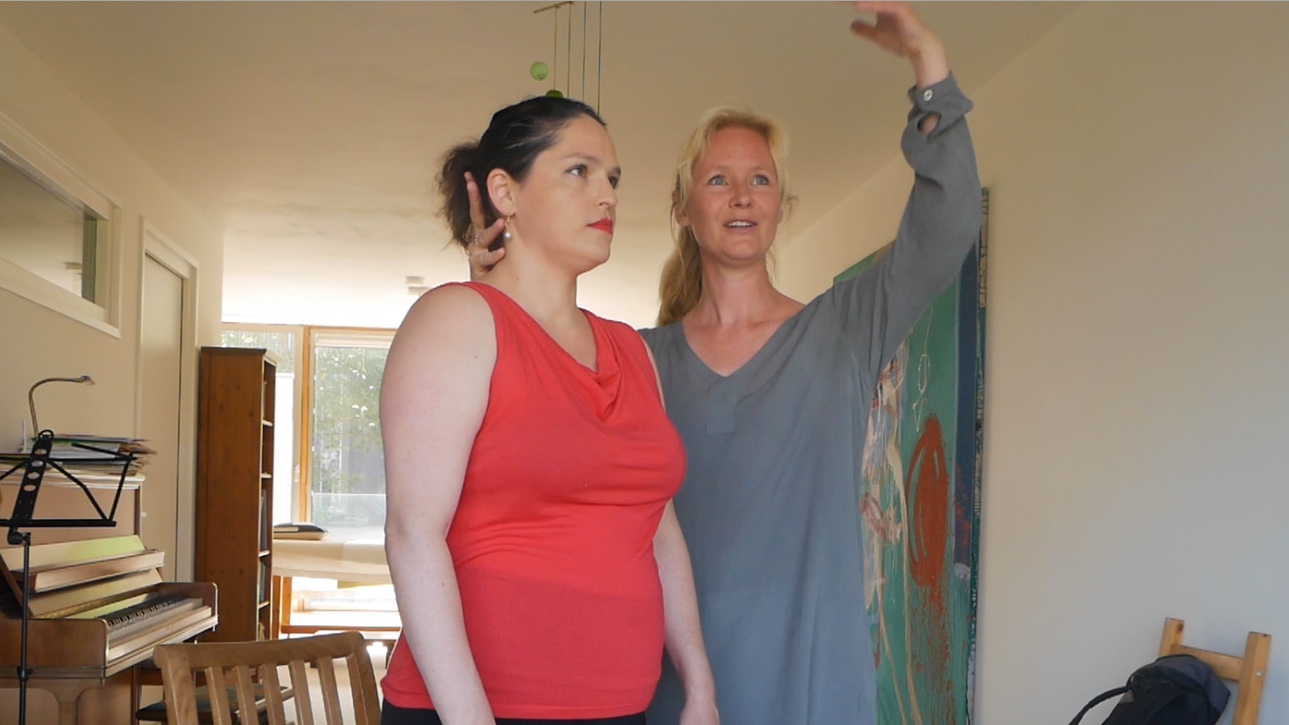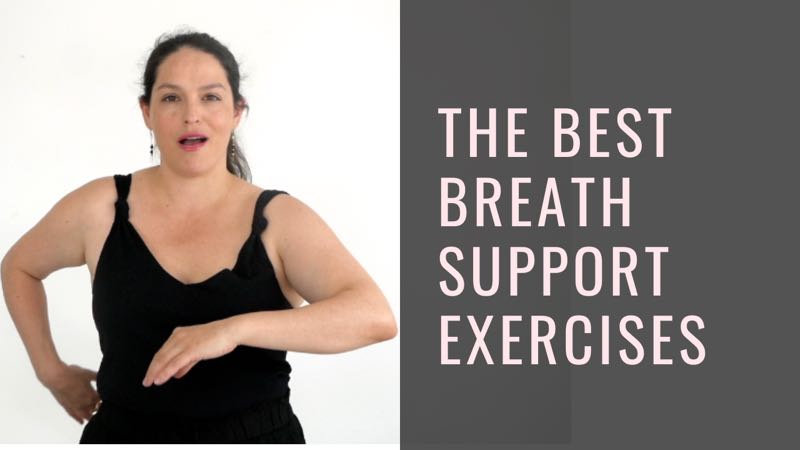Bodywork = Mastery
There is no way around it: if you want to learn how to sing effortlessly, you must work with your body. Your voice is not separate from it — it is your body. Without awareness of what your body is doing and without a body free of tension, vocal progress will always hit a wall.
For a long time, I resisted this truth myself. I thought singing lessons alone would be enough, that if I just practiced scales and tried harder, my voice would magically improve. But that approach is like trying to play guitar using only strings, without the body of the instrument. It doesn’t work. The body shapes and amplifies the sound, and if it’s not aligned or free, the music cannot flourish.
This is why bodywork is not an “extra.” On days when I feel mentally or physically off, I sometimes prioritize yoga or Alexander work over singing drills. It is often better to realign, stretch, and release tension than to sing on a rigid instrument. My students notice it too: even a small shift in posture or awareness can create an immediate change in tone, resonance, and ease. With practice, they begin to notice these changes themselves and can describe what happens when their voice feels free or when tension creeps in.
Developing that kind of awareness takes time. At first, most singers only sense vague impressions: “that felt easier” or “that was tight.” But gradually the fog lifts. You begin to notice that your jaw clenched, or your ribs didn’t expand, or your neck was locked. And with that awareness, everything changes.
Singing is in the body
Many singers feel that their voice is somehow a mystery. We can’t see the vocal folds vibrating, the diaphragm contracting, or the resonance spaces opening. This makes singing feel as if it happens “in the dark.” Some singers even believe it’s all intuition, something you’re either born with or not.
But that isn’t true. Science has made the voice less mysterious every year. We know how the larynx works, how the breath powers the tone, and how resonance shapes it. Singing may be invisible to the eye, but it is not unknowable. The real challenge is not in understanding the theory — it’s in reshaping the habits our bodies have carried for decades.
That is why bodywork is so essential. It provides the missing link between knowledge and practice. It teaches us to feel the internal processes we cannot see, and to rebuild the physical coordination that singing requires.
Free Your Body with Yoga
Yoga is one of the most effective ways to prepare the body for singing. It helps release tension, improve posture, and create more space for breath. When the ribs, chest, and abdomen are free, the voice immediately responds with more resonance and ease.
This does not mean you need to become a dedicated yogi to benefit from it. Even a handful of poses can reset your body on days when you feel stiff or tired. I often tell students that doing a short yoga session can be better than forcing yourself through vocal drills when your body isn’t cooperating. A tense body will only produce a tense sound. A few mindful stretches, on the other hand, can transform your voice in minutes.
In my article on 7 Yoga Poses That Improve Your Singing, I share specific exercises that target singers’ needs. These poses are simple, accessible, and directly connected to better breath, alignment, and release. They are also deeply grounding, reminding you that your voice is carried not only by your lungs and larynx, but by your whole physical presence.

7 yoga poses that improve your singing
A good singing pose... is standing up, right? Not sitting, ideally. But... yoga poses, really! Yes.As a singer who started out with zero body
Align with Alexander Technique
Another powerful approach to bodywork for singers is the Alexander Technique. Unlike yoga, which often works through stretching and strengthening, Alexander focuses on awareness and alignment. It helps you notice unconscious patterns of tension and teaches you to release them.
Many singers are surprised by how much their bodies interfere with their voices without them realizing it. A stiff neck, a raised shoulder, or a tight jaw can make the voice work twice as hard for half the sound. Alexander Technique invites you to pause, to observe those habits, and to allow a freer, more balanced coordination. The smallest adjustments often lead to the biggest breakthroughs: a jaw that relaxes, a spine that lengthens, a throat that suddenly feels open.
In Alexander Technique Singing Exercises, I explain how this method can be integrated into daily singing practice. It is not about “perfect posture” but about finding ease, balance, and efficiency — qualities every singer needs.

Alexander Technique Singing Exercises
Alexander Technique for singers is a quite well known approach. Actually, Alexander is popular in all performance arts. Because it works on your body,
Build Breath Support
Breath is the engine of singing. Without steady, supported airflow, the voice strains, tires quickly, or loses control. Yet many singers misunderstand support, thinking it means pushing harder or holding more air. In reality, breath support is about coordination: allowing the diaphragm, ribs, and abdominal muscles to work together in balance, so the airflow is steady and efficient.
When you develop proper breath support, everything else becomes easier. High notes feel less forced, phrases sustain longer, and tone becomes fuller. Support is also what gives singers confidence on stage — knowing that the voice won’t run out halfway through a line.
I go into detail in my article on Breath Support Exercises, where I share practical drills for building this foundation. Support is not about brute strength but about awareness and control. With practice, you learn to sense the subtle adjustments that keep your voice powered and stable.

Breath support exercises for singing: my favorite ones
The number one controversy in singing advice must be breath support. So before I'll come with my favorite breath support exercises for singing, I
Making Bodywork a Habit
The hardest part of bodywork is consistency. Awareness doesn’t come overnight, and freeing decades of ingrained tension takes time. At first, you may only notice vague sensations: something felt easier, or something felt tight. But with repetition, you learn to identify the exact cause and how to fix it.
This is why I encourage students to treat bodywork as part of their singing practice, not as an optional extra. Ten minutes of yoga, Alexander work, or breath support exercises each day will build a healthier voice far more effectively than hours of tense singing. On difficult days, bodywork may even replace vocal practice — because a relaxed, realigned body is always more valuable than pushing through strain.
Singing is inextricably tied to the body. The more you understand and train your body, the more your voice will thrive.
speaking about bodywork
I am going to tell you fair and square: you won't even get close to your full potential as a singer if you don't do a form of bodywork like yoga.
About the author

I’m Linor Oren, founder of SingWell. I have an opera background and in the past I've performed on stage. I've taught hundreds of students how to find their authentic voice. What I’ve learned is that singing isn’t about being “born with it” — it’s about unlocking what’s already inside you with the right tools and guidance. My passion is helping singers at every level grow in confidence, technique, and joy, so they can sing with freedom and expression.
No longer a little mouse...
Maybe you feel it's time to stop shushing your own voice and take your desire to sing serious. My weekly 'Belting Mouse' mail shows you how. It gets you on track with stories and insights from my life as a singer and that of my students.

For 'little mice' who are tired of squeaking and want to start belting...

